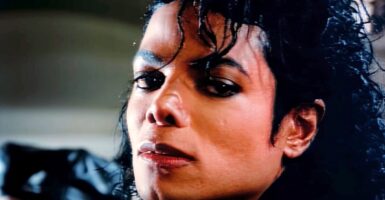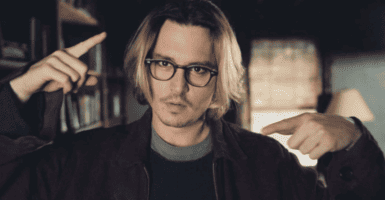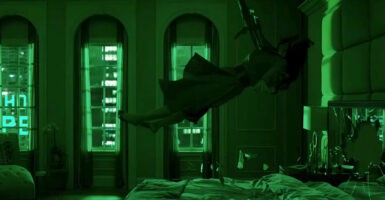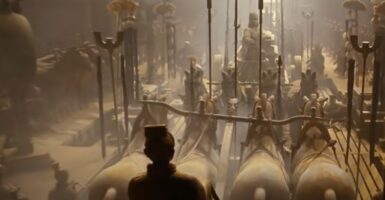The Rings Of Power Does One Thing Better Than Peter Jackson’s Films
The Rings of Power has done a much better job than Jackson's adaptations of portraying the orcs not only as more layered characters, but as more viable threats.
So far The Lord of the Rings: The Rings of Power has been far from perfect, but the series has proven superior to Peter Jackson’s Tolkien adaptations in at least one area–in its handling of the Orcs. On one hand, these twisted creatures have proven to be at least a smidge more sympathetic in the Amazon series. On the other hand, in the new show they’ve become a much more palpable threat to the heroes.
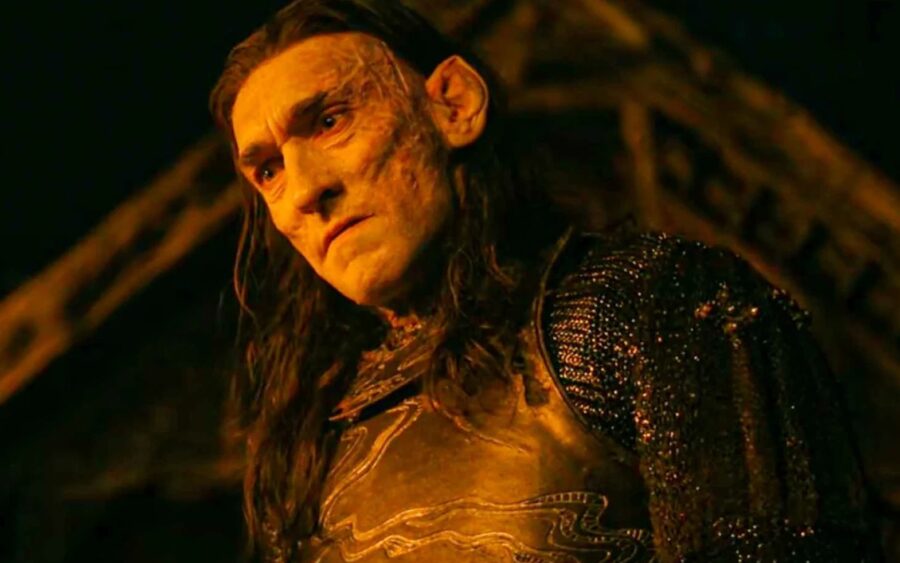
Episode 6 of The Lord of the Rings: The Rings of Power–“Udûn”– proved the most pivotal chapter thus far, revealing Joseph Mawle’s Adar to be not Sauron, but one of the first of the Elves tortured by Morgoth and transformed into an Orc. We also learn that Adar’s goals aren’t riches or power for its own sake, but the means to give his “children,” i.e. the rest of the Orcs, a homeland. Regardless of how the rest of the world sees the Orcs, Adar believes they are as worthy of life as any human or Elf, and that they deserve their own home.
The Rings of Power does not turn Tolkien’s Orcs into misunderstood good guys, mind you. As well as showing their willingness to keep slaves in earlier episodes, “Udûn” has the Orcs engaging in the casual slaughter of innocents. But seen through the viewpoint of Adar, their actions aren’t quite so empty.
As opposed to their Rings of Power counterparts, the Orcs of Peter Jackson‘s adaptations do evil things not for a homeland or any other sympathetic cause, but because evil is cool in a bitchin’ heavy metal album cover kind of way.

When Christopher Lee’s Saruman tells one of his Orcs to use the trees of the nearby Fanghorn Forest as fuel, the wizard’s servant acts like a junkie who just got delivered a year’s worth of free needles and smack.
Because his parents were murdered in a dark alley by trees? No; because cutting down trees is evil and it makes him feel like breaking into an air guitar solo.
Now the crowd of so-called Tolkien purists who have been screaming like Rings of Power personally broke into their homes and burned all their Pokemon cards since the series was announced may argue that the way the Orcs were portrayed in Jackson’s films is more accurate to the source material. And I’m not here to disagree. What I would argue, however, is that this may be part of why the word is “adaptation” and not “direct transfer from page to screen with zero changes upon penalty of death.”
Villains with relatable motivations are more interesting than those who do evil just cuz. It also makes them more palpable threats in the minds of the audience, because the viewers know how far they might be willing to go if–in the case of the the Orcs of Rings of Power, for example–they were denied their own home. Which brings us to another way in which the Orcs are portrayed better in the series: the action.
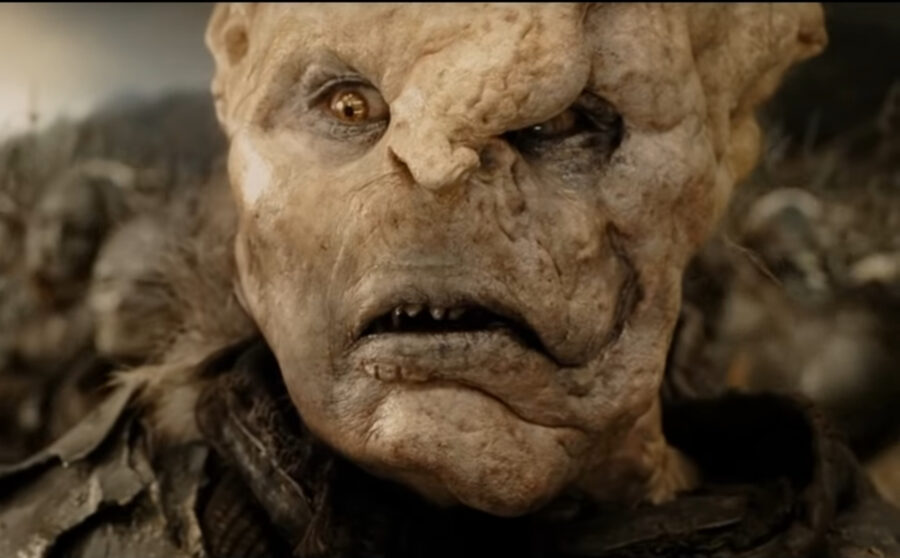
In Jackson’s adaptations, the Orcs are little more than Star Wars stormtroopers who–if Sean Bean happens to be around–have slightly better aim. Sure, there are a couple of exceptions like Lurtz (Lawrence Makoare) of Fellowship or Azog of the Hobbit trilogy, but for the most part the Orcs of Jackson’s films are spoken about like true terrors, but in practice get taken out faster than a Squid Game contestant in “Red Light, Green Light.” In Fellowship we not only see Merry (Dominic Monaghan) and Pippin (Billy Boyd) take out Orcs with small rocks, but Samwise (Sean Astin) literally takes them out with cooking utensils.
Compare that to the battle scene in the latest Rings of Power episode. Arondir (Ismael Cruz Cordova) and some Southland men are firing arrows at Orcs from a rooftop. They take some of the invaders out, but soon the men are killed and Arondir just barely survives being pulled off the roof and hitting the ground below.
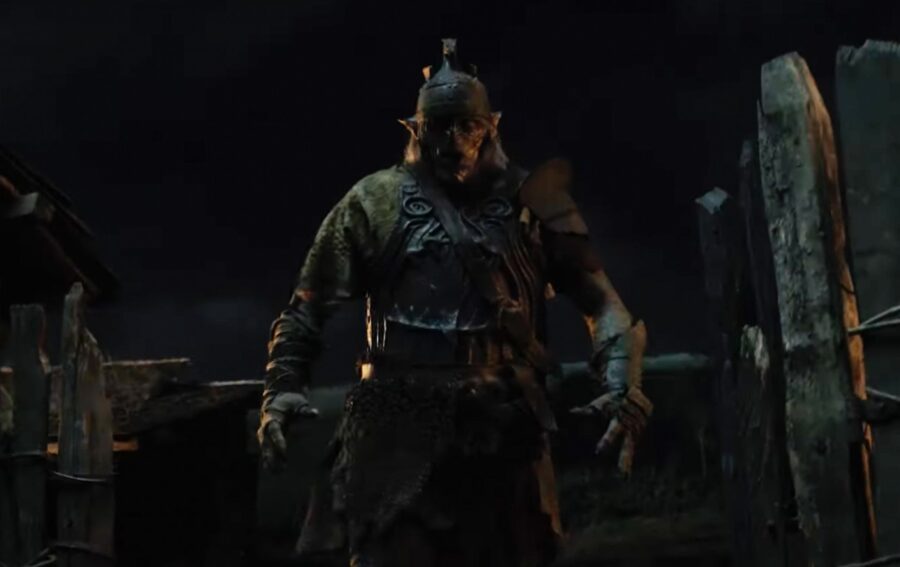
Forcing himself to his feet, Arondir finds himself facing a large Orc. What follows is arguably the most suspenseful and impressive fighting sequence in the series so far, with both adversaries pulling out all the stops and Arondir ultimately surviving only because of the intervention of Bronwyn (Nazanin Boniadi). It’s the kind of scene that has you making noises at the TV, and it’s one of the most viscerally satisfying moments in the show yet.
Now imagine that scene with Orlando Bloom’s Legolas in the Rings of Power scene instead of Arondir. Legolas never would’ve fallen from the roof because he would’ve killed those first Orcs by hand-throwing an arrow between his legs that would pin them to the wall of a building the next town over. Then he would’ve slid down a pole, rode an oliphant, swung from a rope onto the deck of a pirate ship, flipped 18 times in the air, drop-kicked a spaceship, shot 18 arrows into a crowd of Orcs which each and every one hitting its mark, and then landed with a lovely whip of his hair on the corpse of a dead troll he hadn’t noticed he’d killed. No doubt Gimli (John Rhys-Davies) would be nearby to say “that still only counts as one” or something like that.
Peter Jackson’s The Lord of the Rings films were incredible. The Rings of Power has the potential to be great–it’s not quite there yet, but the potential is clear–and the show’s handling of the Orcs is a big step in the right direction.









